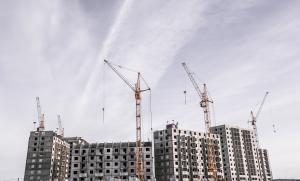
13 Apr, 2017/ by Homeward Legal /Buyer, First Time Buyer
Think high rises and you might envision the skyscrapers that so dramatically shape the skyline of world cities such as London, New York, Chicago and Hong Kong. Perhaps you are drawn to the almost other-worldly sight of Dubai's desert city in the sky or Tokyo's endless skyline.
You're probably less likely to be considering the multi-storey flats that became a feature of urban post-war Britain. Though generally unloved and occasionally very ugly, this was a type accommodation that was sorely needed at the time - many houses had been destroyed in the bombing of the Second World War, while much of what did survive was slum housing and not fit for purpose.
Many of the original blocks erected in the 1950s and 60s have now been demolished, but those that survived are undergoing a bit of a renaissance, while planners are encouraging developers to look upwards as a way of solving the UK's latest housing crisis.
Castles in the air
In London alone, a recent survey by the New London Architecture think-tank revealed that of 26 tall buildings completed in the capital last year, 24 were residential.
Across the UK, there are around 500 tall buildings under construction, with more than 85 percent of those planned in London and the rest in larger cities such as Manchester, Liverpool and Birmingham. Two-thirds of those buildings are earmarked for residential use, cementing still further the idea that high-rise living is most definitely back on the agenda.
While much of London's high-rise apartments are, for example, in the luxury end of the market, the fact that authorities such as Tower Hamlets are looking at multi-storey buildings for social housing and affordable homes suggests there will be wider benefits to this phenomenon.
Certainly high-rise living is a way of life for millions around the globe, where pressure on -space - for example, in New York or Hong Kong - means looking up is the ideal solution.
A life in the clouds
So what could the UK's new high-rise dwellers learn to love about a life in the clouds?
A recent discussion on the Guardian's pages invited readers around the world to share their experiences, with one Londoner memorably commenting "it was like being in an island in the sky". And generally those who contributed to that discussion spoke in positive terms of their life far above the teeming traffic below, with light, spaciousness, cleaner air and great views among the many upsides.
The downsides, of course, are well-documented. A feeling of isolation, a reliance on technology (lifts etc) and even the increased wind the higher up you live are among the negative factors of high-rise living. And the biggest downside for many is the lack of outside space or at least only a limited outdoor space, such as a balcony.
Sociologists have spent decades analysing whether high-rise living without a garden or a specific play area harmed generations of small children. The phenomenon even gave rise to a popular Scottish song, penned in homage to the Glasgow children who left inner-city tenements for multi-storey flats on the outskirts of the city and found their new homes too high up for their mums to throw them down their playtime sandwich.
Whether these modern villages in the sky can address the thorny issue of a lack of outdoor space to relax in is one for the architects.
Moving up, moving in
What is in no doubt is that building up the way can provide a lot more accommodation in a limited space. And as demand continues to outstrip supply in the UK's housing market, it's clear many of us will be moving up if we want to move on.
Whether your ideal home is a penthouse apartment with views across the Thames or a more modest 10th-storey flat overlooking a city park, our friendly, professional team at Homeward Legal can help you on the way to living the high life. Call us now on for a fast, no-obligation quote on conveyancing or click here.
